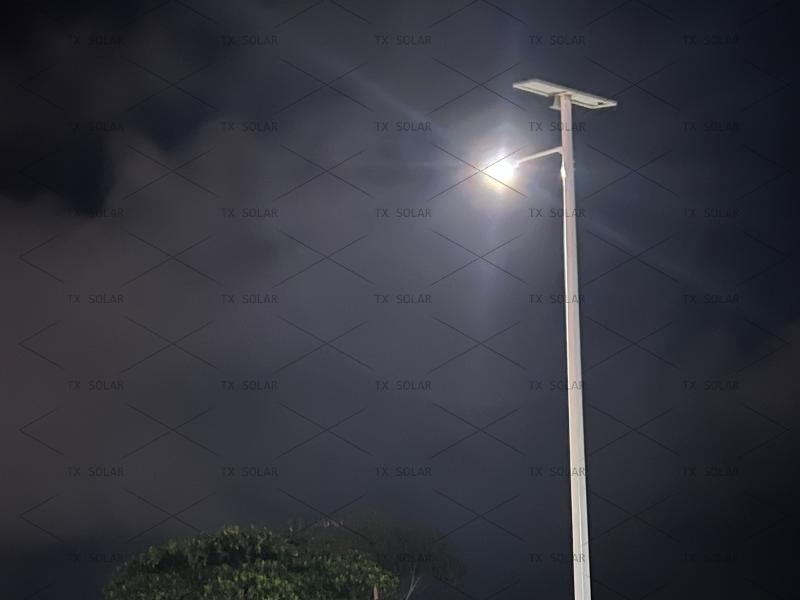The core of solar streetlights is the battery. Four common types of batteries exist: lead-acid batteries, ternary lithium batteries, lithium iron phosphate batteries, and gel batteries. In addition to the commonly used lead-acid and gel batteries, lithium batteries are also very popular in today’s solar street light batteries.
Precautions for Using Lithium Batteries for Solar Street Lights
1. Lithium batteries should be stored in a clean, dry, and well-ventilated environment with an ambient temperature of -5°C to 35°C and a relative humidity no greater than 75%. Avoid contact with corrosive substances and keep away from sources of fire and heat. Maintain a battery charge of 30% to 50% of its nominal capacity. It is recommended to charge stored batteries every six months.
2. Do not store lithium batteries fully charged for extended periods. This can cause bloating, which can affect discharge performance. The optimal storage voltage is around 3.8V per battery. Fully charge the battery before use to effectively prevent bloating.
3. Lithium batteries differ from nickel-cadmium and nickel-metal hydride batteries in that they exhibit a significant aging characteristic. After a period of storage, even without recycling, some of their capacity will be permanently lost. Lithium batteries should be fully charged before storage to minimize capacity loss. The rate of aging also varies at different temperatures and power levels.
4. Due to the characteristics of lithium batteries, they support high current charging and discharging. A fully charged lithium battery should not be stored for more than 72 hours. It is recommended that users fully charge the battery the day before preparing for operation.
5. Unused batteries should be stored in their original packaging away from metal objects. If the packaging has been opened, do not mix batteries. Unpacked batteries can easily come into contact with metal objects, causing a short circuit, leading to leakage, discharge, explosion, fire, and personal injury. One way to prevent this is to store batteries in their original packaging.
Solar Street Light Lithium Battery Maintenance Methods
1. Inspection: Observe the surface of the solar street light lithium battery for cleanliness and for signs of corrosion or leakage. If the outer shell is heavily contaminated, wipe it with a damp cloth.
2. Observation: Check the lithium battery for signs of dents or swelling.
3. Tightening: Tighten the connecting screws between battery cells at least once every six months to prevent loosening, which could cause poor contact and other malfunctions. When maintaining or replacing lithium batteries, tools (such as wrenches) must be insulated to prevent short circuits.
4. Charging: Solar street light lithium batteries should be promptly charged after discharge. If continuous rainy days result in insufficient charging, the power station’s power supply should be discontinued or shortened to prevent over-discharge.
5. Insulation: Ensure proper insulation of the lithium battery compartment during winter.
As the solar street light market continues to grow, it will effectively stimulate lithium battery manufacturers’ enthusiasm for battery development. The research and development of lithium battery material technology and its production will continue to advance. Therefore, with the continuous advancement of battery technology, lithium batteries will become increasingly safer, and new energy street lights will become increasingly sophisticated.
Media Contact
Company Name: Yangzhou Tianxiang Road Lamp Equipment Co., Ltd.
Email: Send Email
Country: China
Website: https://www.txledlighting.com/

